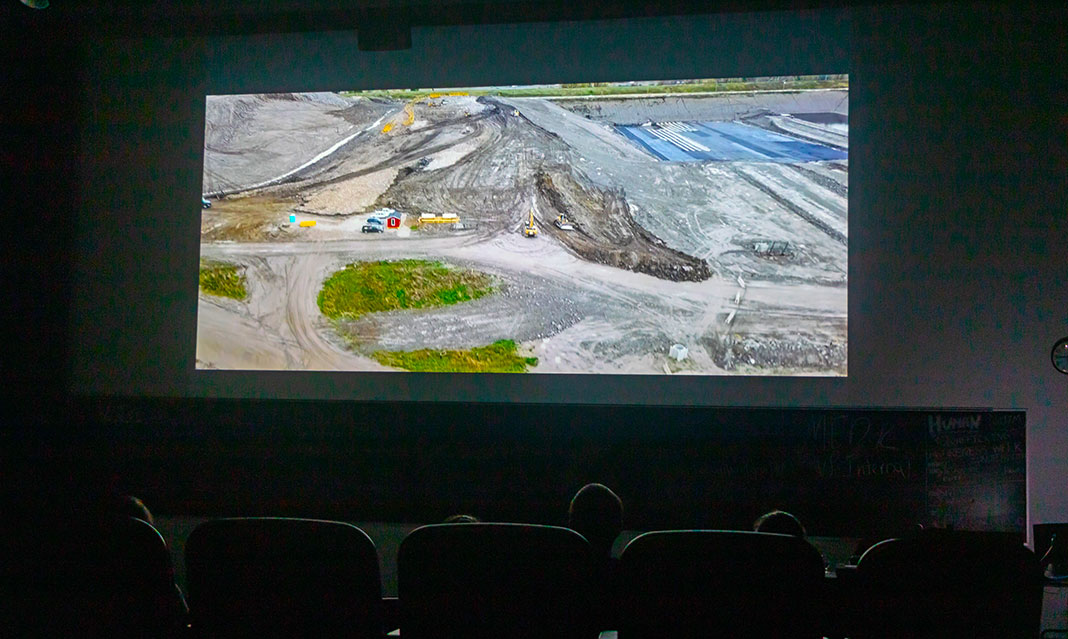Last Wednesday, The STTPA (Sustainability: Transdisciplinary Theory, Practice, and Action) Program screened the multiple award-winning documentary River Blue for UTM’s sustainability week. Students gathered in room CCT1080 as the hosts introduced the film and explained that there would be a chance to speak with director Roger Williams about the documentary. This film traversed the globe to explore one of the most toxic and polluting industries in the world: fashion.
Host Mark Angelo, a prominent river advocate, led the audience through some of the most polluted and toxic rivers in the world including in Xintang, China, Dala, Bangladesh and more.
“We are committing hydrocide,” affirms Sunita Narain, director-general of the Centre for Science and the Environment in India. “We are deliberately murdering our rivers.” The level of pollution in the river has become so serious that it has changed the sex of some of the fishes.
The movie then took us to the city of Dhaka in Bangladesh, which is so polluted, Angelo said, “there are parts of the river that you can light on fire.” The river looks almost black and is viscous while the noxious smell indicates that the ratio is more chemical than water. The people of Dhaka who feel the direct effects of this pollution are shown bathing and playing in the river, even catching and eating fish that were found floating dead in it. Carcinogens including mercury, cadmium, and lead from the dye used in fashion items are in the water and can lead to irreversible effects such as damage to the nervous system and kidneys, shortening the life span of people who come into contact with them.
Many of these factories make textiles for the biggest brands in the world, especially fast fashion brands like Zara and H&M. Shots of bright glittery fashion runways filled with willowy girls draped in shiny clothes are interspersed with shots of the citizens of Dhaka and Xintang drenching themselves in black and blue river water, working in the factories as they breathe in in the chemicals sprayed on textiles, and little children walking along trash heaps. A powerful scene that showed the extreme discrepancy and disconnect between a chain of production that is quietly yet intrinsically connected.
River Blue also interviewed eco-friendly companies who showed how it was possible to create materials in a more sustainable way. Instead of using toxic chemicals and water, Spanish brand Jeanologia uses lasers to create the distressed texture in jeans. “I think all corporations have to be accountable for their environmental practices. More within the textile sector have to commit to a fashion industry without pollution,” Angelo implored.
The documentary is rightfully highly acclaimed and lays out a clear picture of the hidden line of production behind the crisp jeans a lot of consumers casually buy. Interestingly, the documentary did not explicitly depict the producers as uncaring of the environment, but as people who were aware of this damage and genuinely felt shocked and contrite at the fashion practices of major brands.
On witnessing the guilt, producer Roger Williams said in the interview that, “they do feel guilty, there’s not a question. They start something naively, they don’t really know what they’re doing, they’re just trying to create new cool fashion [in the 60s, 70s, and 80s] and they didn’t really have a clue that what they were doing was going to have such a detrimental effect.”
The screening of River Blue was a successful end to the sustainability fair and provided an important look behind the production of fashion and how it impacts Earth’s ecology.



